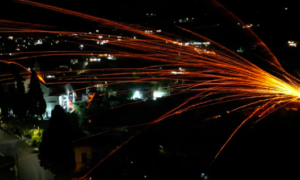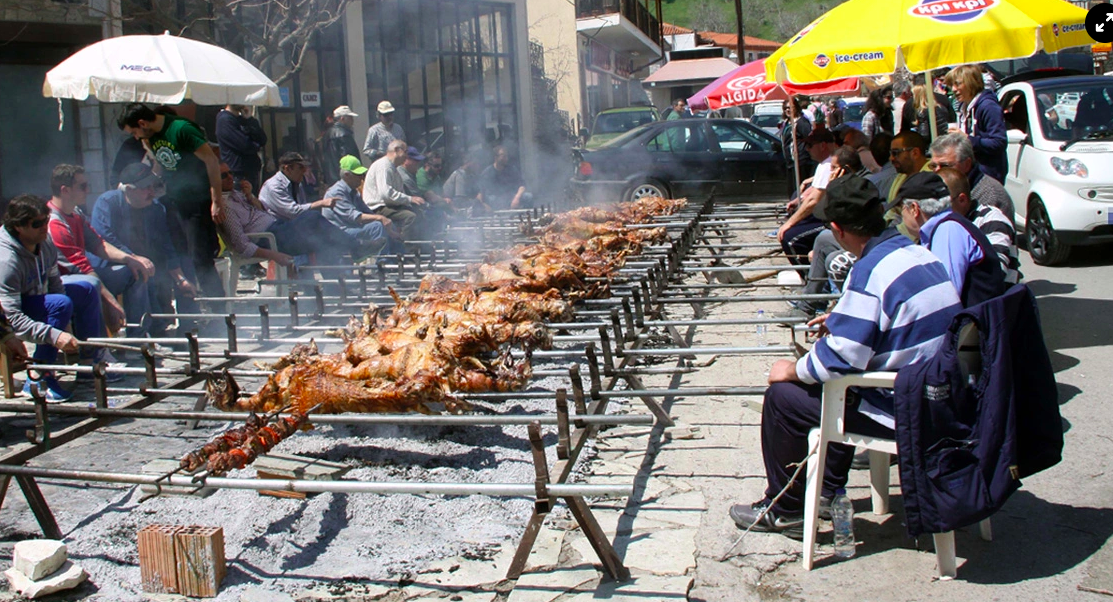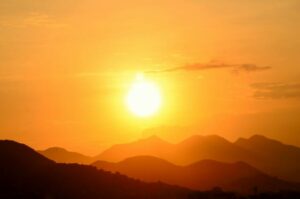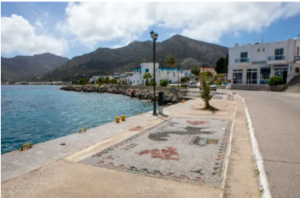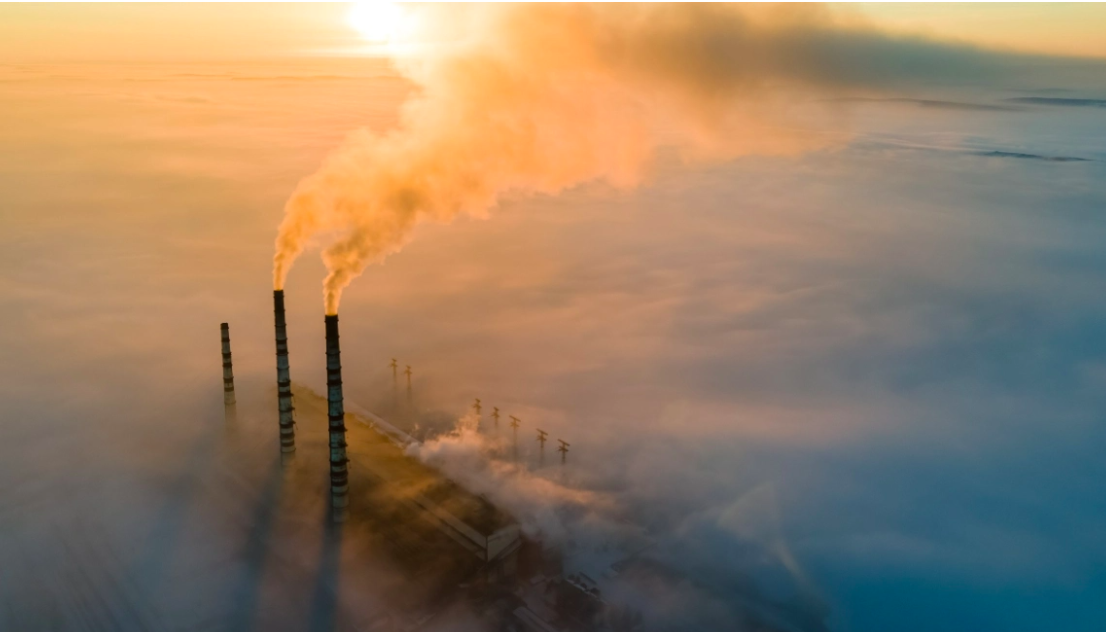The passage discusses the significance of Easter in Christianity and its relation to the Jewish Passover. It explains the symbolism of the lamb in Christian tradition and its connection to Christ’s sacrifice. Additionally, it explores the origins of the custom of roasting lambs, tracing it to both Jewish and ancient Greek traditions. The text also touches upon various Easter customs observed across Greece, emphasising the importance of noise and light in the celebration of the Resurrection.
After the Easter service, believers bring the Holy Light home, marking their doors with candle smoke and lighting vigil lamps to remain lit until the next Easter. Traditionally, they also used to circulate the light around sterile animals and barren trees for fertility. The Easter table features magiritsa, roast lamb, red eggs, and Easter bread, symbolizing birth and the Resurrection of Christ. Easter celebrations vary by region, such as the Roumeliote Easter and Easter of Tripoli, each reflecting unique agricultural traditions. These customs originate from the Jewish Passover, involving lamb sacrifice, and are widespread across the Balkan Christian world.
On Easter Sunday, various regions in Greece celebrate with unique traditions:
– Livadia: Residents prepare a bonfire (“lakkos”) before dawn using the Easter candle, grilling lambs atop branches, accompanied by music and wine.
– Ypati, Phthiotis: Events center around the church of Agios Nikolaos, featuring dancing and a resurrection dance by the priest.
– Amygdalea, Dorida: Men dance around the church three times before descending to the square, following an ancient tradition.
– Leonidio, Arcadia: Bright hot air balloons fill the sky, while in Chios, a rocket war tradition commemorates the struggles of 1821.
– Kalamata and Messinia: Saitopolemos, a rocket war, is revived with teams dressed traditionally engaging in the contest.
– Kythnos: The cradle tradition sees boys and girls swinging in traditional costumes, symbolizing marriage.
– Corfu: The Resurrection service at the Upper Square includes a procession, drumming, fireworks, and band performances, followed by festivities with local specialties and wine. Unlike other regions, Corfu has recently adopted lamb roasting on Easter Saturday.
In Naxos, the traditional Easter dish called “batoudo,” a stuffed goat filled with entrails, vegetables, rice, eggs, and cheese and baked in the oven, is prominent on the Easter table.
In Kos, children prepare for the Resurrection while adults are occupied with Easter preparations and church ceremonies. They use large keys from old locks, attaching gunpowder to them with ropes, then inserting the key into the keyhole and hitting it against the wall on the night of the Resurrection to explode. Others create explosive paper strips, wrapping gunpowder and a wick at the edge, lighting them when the priest announces “Christ is Risen.”
In Mykonos, on Easter Sunday afternoon, residents burn an effigy of “Judas” in the square.
In Tyros, Arcadia, children throw thousands of candles into the sea on the night of the Resurrection, symbolizing lost souls of Tsakonian sailors and fishermen. Easter Sunday features a Tsakonian celebration in the central square, with lamb, wine, and dance, accompanied by the Gospel read in the Tsakonian dialect.
Resurrection with 90 Molotov and fireworks in Neos Kosmos
In Amorgos, young people gather in churchyards on Easter Sunday afternoon to participate in group traditional games.In Andros, on the night of the Resurrection, young people place iron pipes filled with gunpowder in the ground and ignite them. Easter Sunday includes eating “lamproti,” roasted lamb or goat stuffed with vegetables, and playing traditional games like “tsounia” in Paleopolis, Korthi, and other villages, or “bilioi” in Schinoussa. In Milos, on Easter Sunday, the “burning of Judas” occurs, a custom from early Christian times. Additionally, the “baroutio” custom takes place in the courtyards of the churches of Agios Spyridon (Triovasalos) and Agios Georgios (Pera Triovasalos).

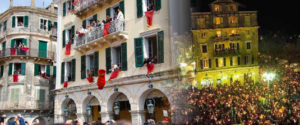
In Santorini, post-Resurrection, locals bring home a “koutsouna” and a red egg for “sgardoumia.” Easter Sunday sees the trial of “Ovraios” in some villages, ending in the effigy’s burning. Sifnos features Easter lamb cooked in a “mastelo” and the burning of Judas in Apollonia. Mount Athos celebrates with fish dishes and multilingual chants. Epirus recalls “ta fotikia” gifts. Lake Agios Nikolaos hosts Judas burning, marking the tourist season. Western Phthiotis lights a sklidha for protection. Kozani chants at the cemetery, and Lake Plastiras sees a “double dance.” Agios in Aidipsos lights lanterns, and Gerakio in Evia dances post-service. Vrontados in Chios celebrates with a rocket war.
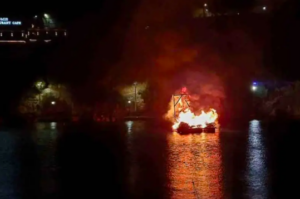
In Vrontados, Chios, rival teams from two parishes began their parade together along the coast, aiming to reach their diverging points to prepare for their “battle positions.” Thousands of rockets illuminated the sky, marking the faithful celebration of the Resurrection, an ancient tradition. This year, an estimated 20,000 spectators from Greece and abroad witnessed the event. Smooth organization was ensured by numerous volunteers, with the Fire Department swiftly tackling small fires and the Police managing traffic.The continuation on Easter Sunday morning, where the Municipality of Chios, along with volunteers, will collect the thousands of rocket sticks from the yards of houses and the streets, renewing their appointment for the Rocket War of 2025.
